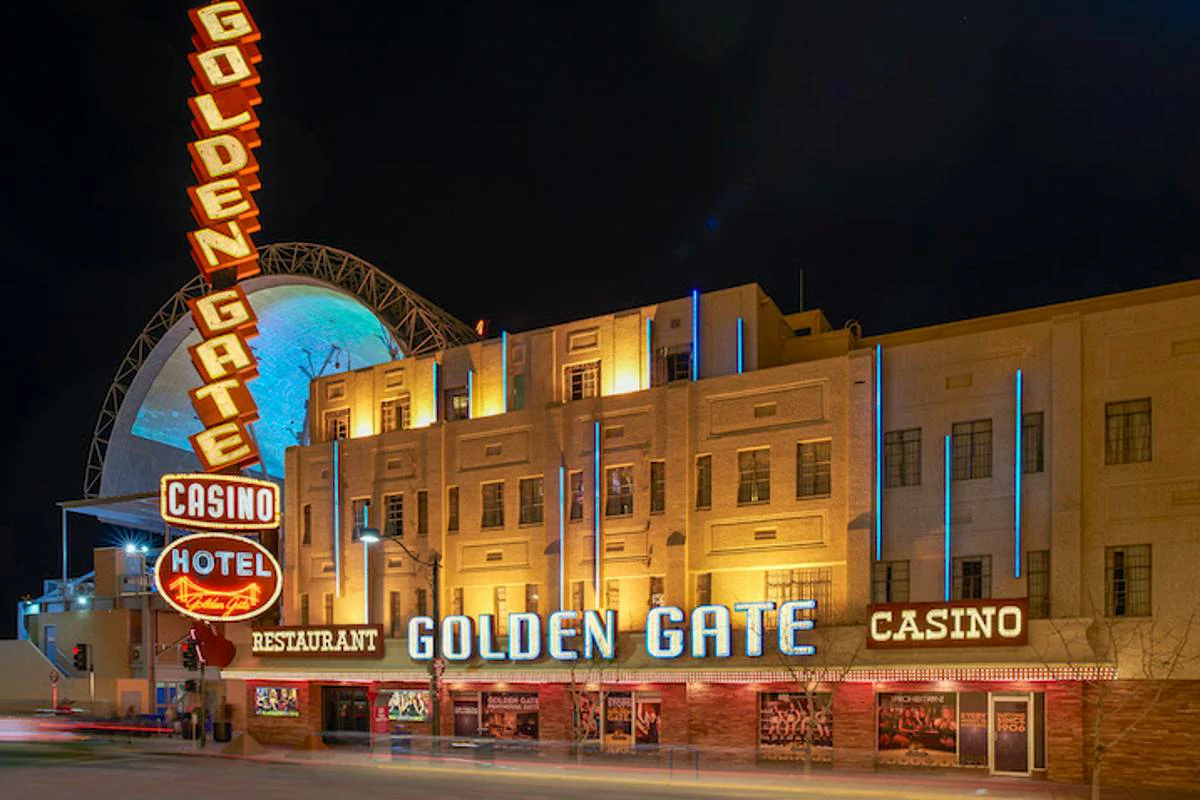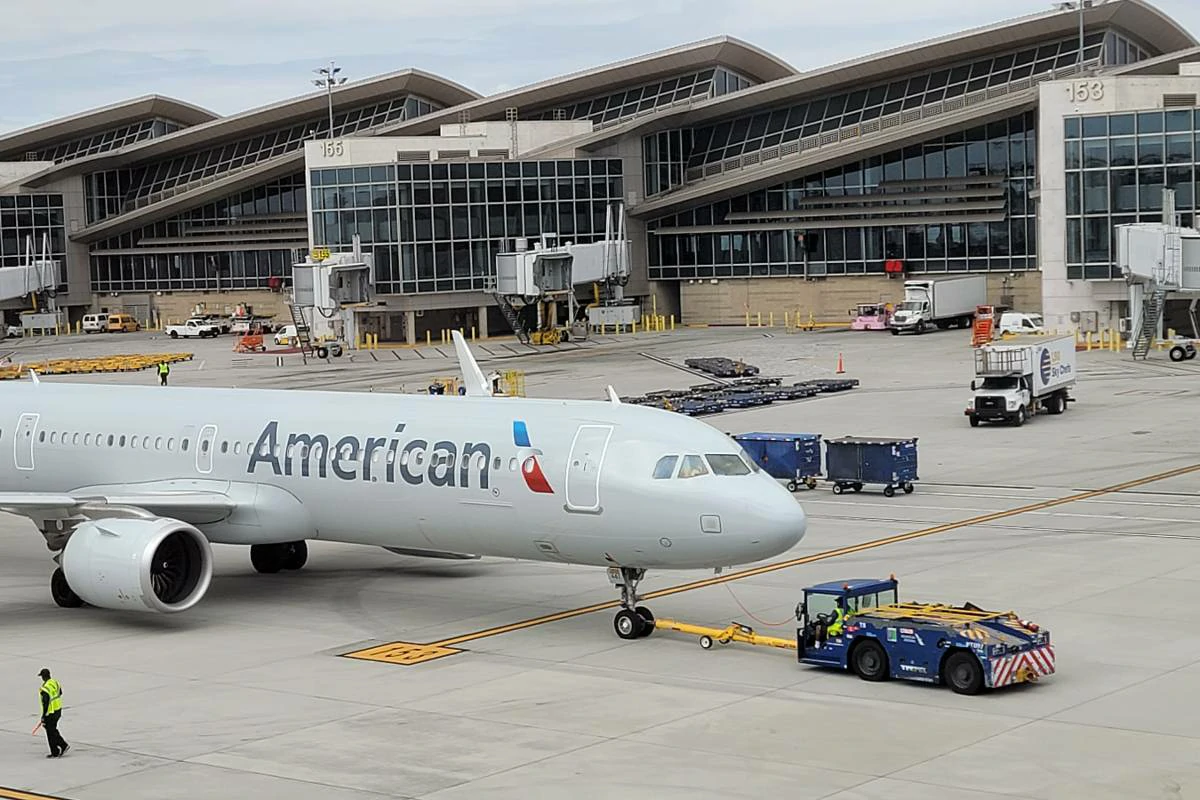What is the oldest hotel in Las Vegas? Answer is – The Golden Gate Hotel & Casino takes the title of the oldest hotel in Las Vegas. It opened in 1906 as the Hotel Nevada and has been in continuous operation ever since.
Summary
- Las Vegas’ hotel landscape is constantly evolving, with older properties being demolished and replaced.
- The Golden Gate Hotel & Casino opened in 1906, making it the city’s oldest hotel.
- The Golden Gate holds significant historical value for Las Vegas.
- Several other vintage hotels still offer a glimpse into the classic Las Vegas experience.
What is the Oldest Hotel in Las Vegas
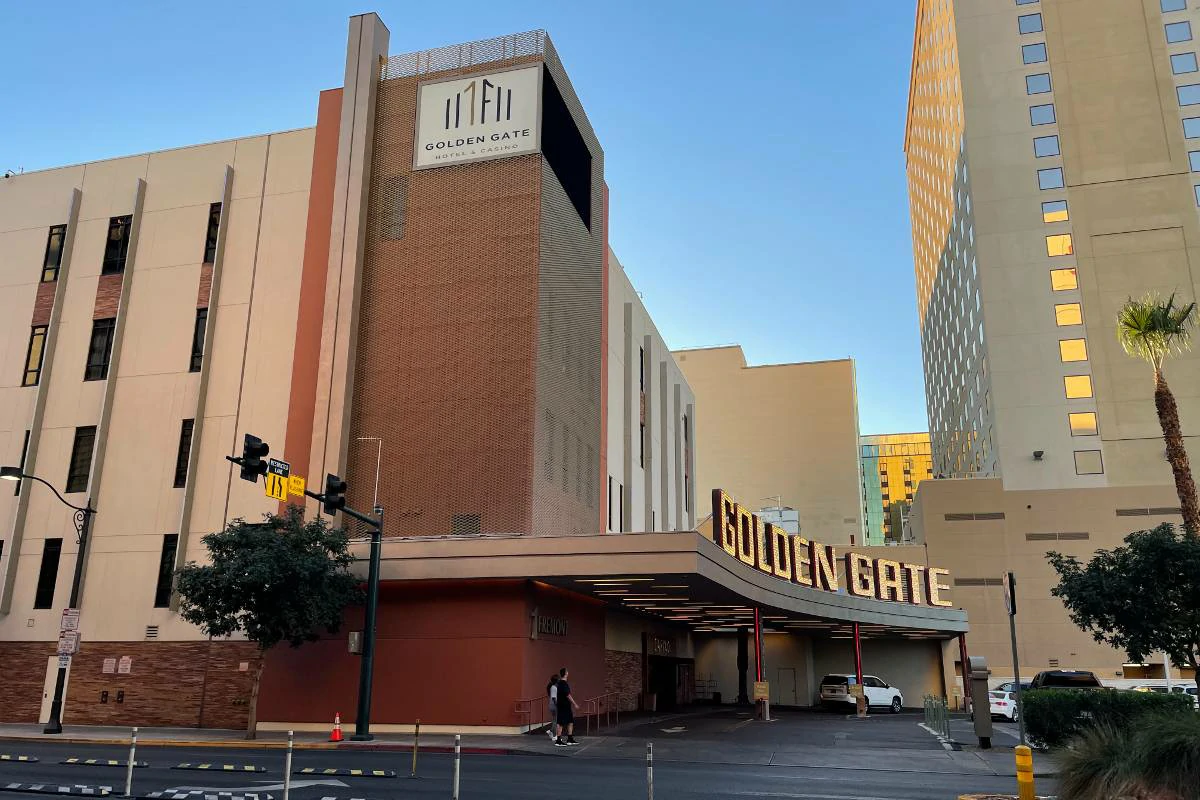
Las Vegas, the glittering “Entertainment Capital of the World,” embodies a spirit of constant reinvention. Its skyline shifts with dazzling new resorts rising alongside the implosions of iconic landmarks.
The relentless pace of change makes the preservation of Las Vegas’s vintage hotels remarkably important. These establishments are more than just places to stay – they hold the stories, the glamour, and the grit that shaped the city’s legend.
Las Vegas: A City of Constant Evolution
From its humble beginnings as a desert railroad town, Las Vegas has boldly embraced transformation. The legalization of gambling in 1931 sparked an era of casino-driven growth that saw numerous now-legendary properties rise and fall.
Hotels like the Dunes, the Sands, and the Stardust – once symbols of Sin City’s golden age – have long been reduced to rubble, making way for the next wave of extravagance.
“Vegas is never satisfied with the status quo,” explains local historian Michael Green, Associate Professor of History at the University of Nevada, Las Vegas. “The city operates under a mindset that bigger and newer almost always equates to better”.
The Significance of Preserving a Piece of the Past
The drive for endless reinvention creates a unique challenge for historical preservation in Las Vegas. However, there’s a growing recognition that saving some of these classic hotels isn’t just about nostalgia – it’s about safeguarding the city’s identity.
These hotels serve as time capsules, transporting visitors to the days of the Rat Pack, mobster influence, and the classic Vegas cocktail culture.
Vintage hotels offer an undeniable charm and a sense of history rarely found in their mega-resort counterparts. Their classic neon signs, intimate lounges, and well-worn furnishings echo tales of bygone eras.
Staying in one of these establishments becomes an immersive experience, a connection to the audacious spirit that built Las Vegas into a global phenomenon.
“Some would argue that tearing down old hotels to make way for the new is progress,” notes architectural preservationist Emily Neighbors. “But, when we lose these iconic structures, we lose a tangible part of Las Vegas’s unique story.”
The preservation of historic hotels is not only about honoring the past but also about enriching the present. In a city that often prioritizes spectacle, these establishments offer an authentic and undeniably cool alternative for those seeking a taste of the real Las Vegas.
What is the Oldest Hotel in Las Vegas?
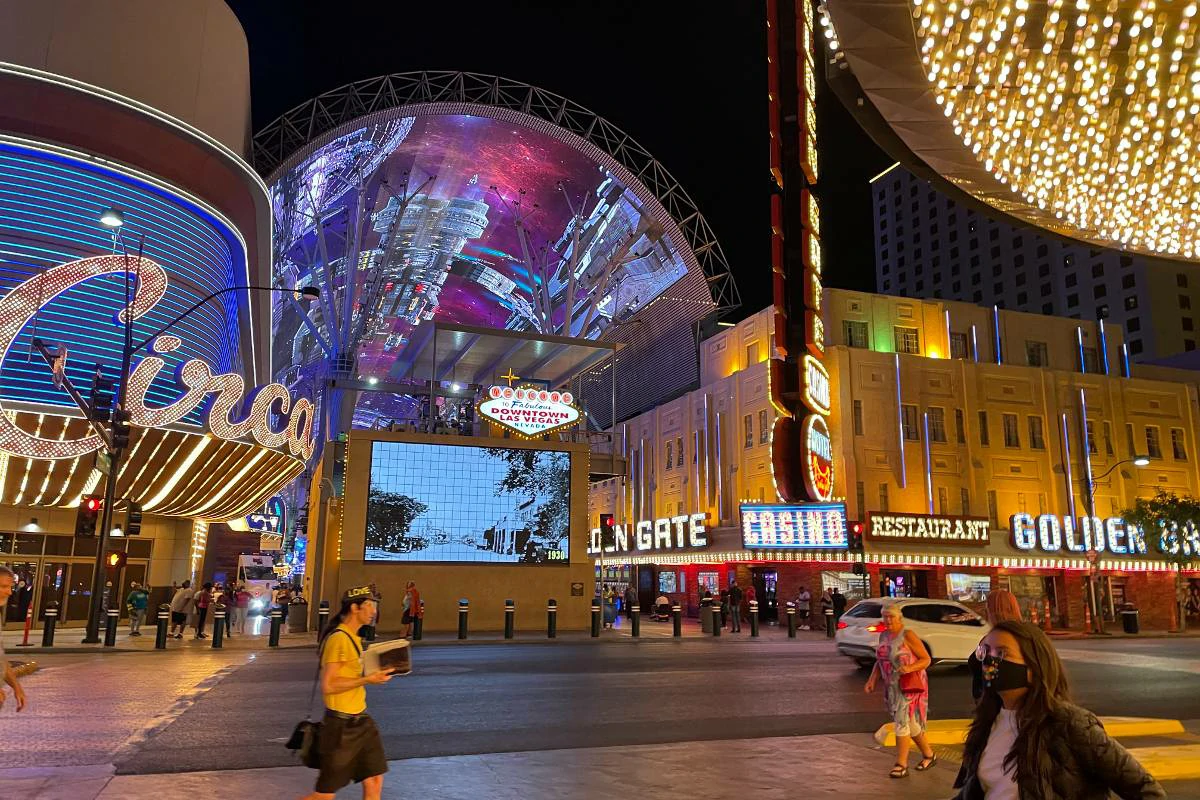
The Golden Gate Hotel & Casino proudly holds the title of the oldest hotel in Las Vegas. Its story begins in 1906, a year before the city of Las Vegas was officially incorporated.
The Birth of a Legend: The Hotel Nevada
Originally known as the Hotel Nevada, the Golden Gate began as a humble tented hotel amidst the dusty desert town. Its founder, John F. Miller, was a visionary who recognized the potential in the remote railroad stop. The hotel catered to railroad workers and the growing number of prospectors drawn to the area.
With the promise of development, a land auction was held in 1905, and Miller secured a prime location at 1 Fremont Street. That same year, construction began on a more permanent structure that became the first hotel in the newly founded Las Vegas.
The two-story hotel opened its doors on January 13, 1906, featuring amenities like electric lights, indoor plumbing, heating, and even a telephone system – a rarity at the time.
Evolution and the Golden Gate
While the Hotel Nevada enjoyed early success, it faced a setback when Nevada banned gambling in 1909. The hotel soldiered on and found new life when gambling was legalized once again in 1931.
During this era, the property was renamed ‘Sal Sagev’ – Las Vegas spelled backward – a playful nod to its resilience during the gambling prohibition years.
The Golden Gate Casino opened in 1955 as a separate business on the ground floor of the hotel. Eventually, the casino purchased the hotel, and in 1974, the entire property was renamed the Golden Gate Hotel & Casino, taking inspiration from San Francisco’s iconic Golden Gate Bridge.
Historical Treasures
The Golden Gate brims with historical artifacts and quirky facts that underscore its place in Las Vegas lore. Some notable highlights include:
- Las Vegas’ First Telephone: The hotel housed the city’s first phone in 1906. The phone number? A simple “1”.
- The Original Shrimp Cocktail: The Golden Gate is credited with introducing the now-famous shrimp cocktail in 1959. This simple yet iconic dish quickly became a Vegas staple.
- The Rat Pack Connection: Frank Sinatra and the Rat Pack were regulars at the Golden Gate, adding to its glamorous reputation.
Preserving the Legacy
“The Golden Gate is more than a hotel; it’s a living piece of Las Vegas history,” remarks Alan Balmain, a longtime Las Vegas resident and author of a book on the city’s early casinos.
The Golden Gate Hotel & Casino has witnessed the city’s incredible transformation from a desert outpost to a global entertainment mecca. Despite renovations and expansions, the property retains its vintage charm.
Its classic neon sign, smaller casino floor, and a touch of old-school Vegas ambiance provide a unique experience that stands apart from the mega-resorts dominating the Strip.
The Golden Gate serves as a tangible reminder of the bold, pioneering spirit that built Las Vegas and continues to contribute to the city’s captivating story.
Other Notable “Old” Las Vegas Hotels
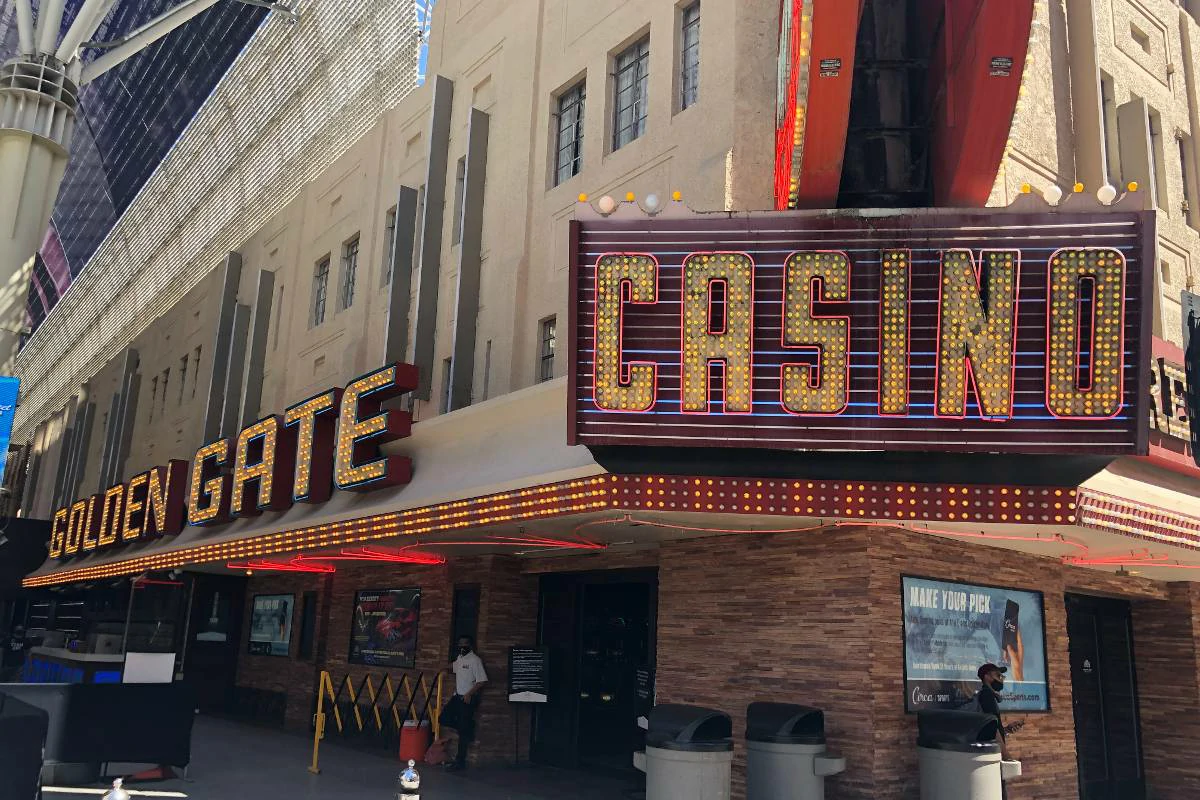
Beyond the Golden Gate, several other historic hotels offer a taste of classic Las Vegas. These architectural gems have witnessed eras of transformation, their walls echoing with bygone glamour and a touch of the audacious spirit that built the city.
1. El Cortez Hotel & Casino (1941)
Located in the heart of Downtown Las Vegas on Fremont Street, the El Cortez stands as a testament to both resilience and vintage charm. Built by legendary mobster Bugsy Siegel along with other investors, its opening in 1941 ushered in a new level of sophistication for downtown casinos. The Spanish Colonial Revival-style hotel exudes a timeless elegance.
A Touch of Mobster History: The El Cortez embodies a fascinating chapter in Vegas history. Siegel’s involvement, although brief, has become part of the building’s mystique. Stories of secret tunnels and mob intrigue persist, adding to its unique allure.
Preservation and Downtown Revitalization: The El Cortez has changed hands numerous times over the decades but remarkably still operates as both a hotel and casino. It has been designated a Las Vegas Historic Place and remains an integral part of the ongoing revitalization of Downtown Las Vegas.
Vintage Vegas Experience: The El Cortez provides a more intimate casino experience compared to modern resorts. Its classic architecture, retro neon signage, and old-school dining options transport guests back to a different era of Vegas.
2. Flamingo Las Vegas (1946)
The Flamingo Las Vegas, a pink neon beacon on the Strip, is an icon of Sin City excess and mid-century modern style. Also founded by Bugsy Siegel, its opening in 1946 marked a significant turning point in Las Vegas history. The Flamingo aimed to bring Hollywood-level glitz and sophistication to the desert, setting a new standard for Las Vegas resorts.
The Birth of Strip Glamour: The Flamingo’s lavish design, luxurious amenities, and star-studded entertainment helped establish the Las Vegas Strip as a premier entertainment destination. Its tropical theme, with lush landscaping and its signature pink neon sign, set it apart from anything the city had seen before.
Hollywood Connection: Celebrities flocked to the Flamingo, with luminaries like Frank Sinatra, Judy Garland, and Dean Martin becoming frequent performers and guests. This added further to the hotel’s mystique and solidified its place in popular culture.
Evolution and Expansion: While the original Flamingo buildings have long been demolished, the property has undergone continuous expansions and renovations. However, nods to its glamorous past remain, keeping its legacy alive within the modern resort.
3. The Sahara (now closed, but historically significant)
Though closed in 2011, the Sahara Hotel & Casino continues to hold a special place in Las Vegas history. Opened in 1952, its Moroccan theme brought a touch of the exotic to the desert. Its lavishly decorated interior and sprawling pool area made it a favorite among celebrities and visitors alike.
Entertainment Hub: The Sahara played host to some of the biggest names in show business. The Rat Pack famously performed in the Casbar Lounge, furthering the hotel’s popularity in the 1950s and 60s. Its iconic camel mascot is fondly remembered by Vegas enthusiasts.
Witness to Change: Despite its grand past, the Sahara struggled to remain competitive and eventually closed its doors. Its demolition in 2014 was a poignant reminder of the ever-shifting Las Vegas landscape.
Historical Legacy: Even though it’s no longer standing, the Sahara’s legacy as an influential player in the development of Las Vegas entertainment remains strong.
4. Downtown Grand Hotel & Casino (formerly Lady Luck, opened 1964)
Located in the heart of Downtown Las Vegas, the Downtown Grand Hotel & Casino has undergone transformations while still maintaining its connection to the city’s roots. Opening its doors in 1964 as Lady Luck, the hotel aimed to provide an intimate and elegant atmosphere in the evolving downtown area.
A Downtown Renaissance: Lady Luck faced ups and downs over the years with ownership changes and renovations. However, its recent transformation into the Downtown Grand in 2013 breathed new life into the property. The rebranding brought about a more modern design aesthetic while still honoring the hotel’s past.
Gateway to Fremont East: The Downtown Grand occupies a prime location within the revitalized Fremont East Entertainment District, an area known for its vibrant street art, vintage shops, and trendy bars.
Vintage with a Modern Twist: The Downtown Grand offers a mix of old and new Vegas experiences. Its Citrus Grand Pool Deck provides a lively pool scene, while its smaller, less-crowded casino floor and classic dining options offer a touch of nostalgia.
5. Binion’s Hotel & Casino (opened 1951, though part is now under a different name)
Binion’s Hotel & Casino is another legendary name in Las Vegas history. Its founder, Benny Binion, was a Texas gambler with a colorful past and a reputation for offering the best odds in town. While parts of the original Binion’s are now known as The Four Queens, a portion of the hotel still operates as Binion’s Gambling Hall & Hotel.
Wild West Meets Vegas Glitz: Binion’s embodied the frontier spirit of early Las Vegas. Its casino famously featured a million dollars in cash behind glass and sawdust-covered floors. The hotel also hosted the World Series of Poker from its inception in 1970 until 2004, solidifying its place in gambling history.
Witnessing Transformation: While portions of Binion’s have been rebranded, the area within Binion’s Gambling Hall & Hotel retains a distinctly vintage feel. Its classic neon signage, old-school table games, and the iconic photo opportunity with a million dollars in cash transport visitors back in time.
Legacy of a Gambling Legend: “Benny Binion, as a figure, is larger than life,” notes Michael Green, Associate Professor of History at the University of Nevada, Las Vegas. “He represented a certain style of casino owner – the true gambler who understood hospitality and how to treat his customers.”
6. Tropicana Las Vegas (1957)
The Tropicana Las Vegas, with its South Beach-inspired style, brought a touch of tropical paradise to the desert when it opened in 1957. Located at a prime spot on the southern end of the Las Vegas Strip, it continues to be a popular destination for both visitors and locals.
Iconic Design: The Tropicana’s original mid-century modern architecture is one of its most enduring draws. Its sprawling pool area, surrounded by lush palm trees, creates an oasis-like atmosphere.
A Touch of Old-School Cool: While the Tropicana has undergone renovations and expansions, it has retained elements of its vintage charm. Classic restaurants like the Golden Tiki and the retro-chic Laugh Factory comedy club offer experiences not easily found in newer resorts.
Evolution and Resilience: The Tropicana holds the distinction of being one of the few long-standing Las Vegas resorts to have never been imploded. This testament to its staying power is a part of its unique appeal.
7. Circus Circus (1968)
Circus Circus brings together family-friendly affordability with a unique carnival-like atmosphere that sets it apart from other Vegas resorts. Opening its doors in 1968, it aimed to create a fun and accessible destination for visitors of all ages.
Big Top Entertainment: The hotel’s permanent circus has been a mainstay since its opening day, providing guests with free, family-friendly entertainment under its iconic big top. The Adventuredome indoor theme park adds to its appeal for both kids and kids-at-heart.
Wallet-Friendly Vegas: Circus Circus has long been known as one of the most affordable resorts on the Strip. While it may lack the glitz and glamor of some other properties, it offers solid value and a unique experience.
Nostalgia Factor: For many, Circus Circus evokes a sense of old-school Vegas fun. Its classic midway games, carnival-themed restaurants, and whimsical décor offer a break from the sleekness of modern casino resorts.
8. Riviera (now closed, but historically significant)
The Riviera, which opened in 1955 and sadly closed in 2015, was a true icon of Las Vegas’ golden era. Its high-rise tower and elegant design helped establish a new standard for Strip hotels, and it quickly became a favorite of celebrities and high rollers.
Entertainment Powerhouse: The Riviera hosted some of the biggest names in show business throughout its history. Frank Sinatra, Dean Martin, Liberace, and countless others graced its stages, solidifying the hotel’s legendary reputation.
Appearances in Pop Culture: The Riviera is immortalized in classic films like the original “Ocean’s 11” (1960) and “Casino” (1995), underscoring its status as a pop culture landmark.
Witness to Change: Despite its glamorous past, the Riviera struggled to compete with newer, more luxurious mega-resorts and ultimately closed its doors. Its implosion in 2016 symbolized the end of an era in Las Vegas history.
9. The STRAT Hotel, Casino & SkyPod (formerly the Stratosphere, significant for its tower)
The STRAT Hotel, Casino & SkyPod, most recognizable for its towering presence on the northern end of the Strip, opened in 1996 under the name Stratosphere. It aimed to bring a new level of thrill and spectacle to the Las Vegas skyline.
Sky-High Thrills: The STRAT’s most defining feature is its observation tower, the tallest freestanding structure in the United States. It offers breathtaking views of the city and houses thrill rides like the Big Shot and X-Scream.
Evolving Identity: The hotel started as the Stratosphere but underwent rebranding and renovations to arrive at its current iteration as The STRAT. It now offers a more retro-style experience with value-driven accommodations.
A Piece of Vegas Skyline: Regardless of its name changes, The STRAT’s iconic tower will forever be a part of the iconic Las Vegas skyline, reminding visitors of the city’s ambition for reaching new heights.
10. Caesars Palace (1966)
Caesars Palace, with its Greco-Roman theme and over-the-top luxury, has been an enduring symbol of Vegas extravagance since its opening in 1966. It was envisioned by Jay Sarno as a palace fit for an emperor, redefining the lavishness of Las Vegas resorts.
Playground for the Rich & Famous: Caesars Palace quickly became known for its opulent atmosphere, high-limit gaming, and celebrity clientele. Its reputation for catering to high rollers still remains a strong part of its brand.
Spectacle and Entertainment: The hotel has been home to numerous high-profile events over the years, from legendary boxing matches to world-class concerts. Its Colosseum stage has hosted residencies by stars like Celine Dion, Elton John, and Cher.
Evolution of an Icon: While Caesars Palace has maintained its air of extravagance, it has evolved over the years. Expansions include the sprawling Forum Shops, numerous restaurants, and the luxurious Nobu Hotel.
Why Do Old Hotels Matter?
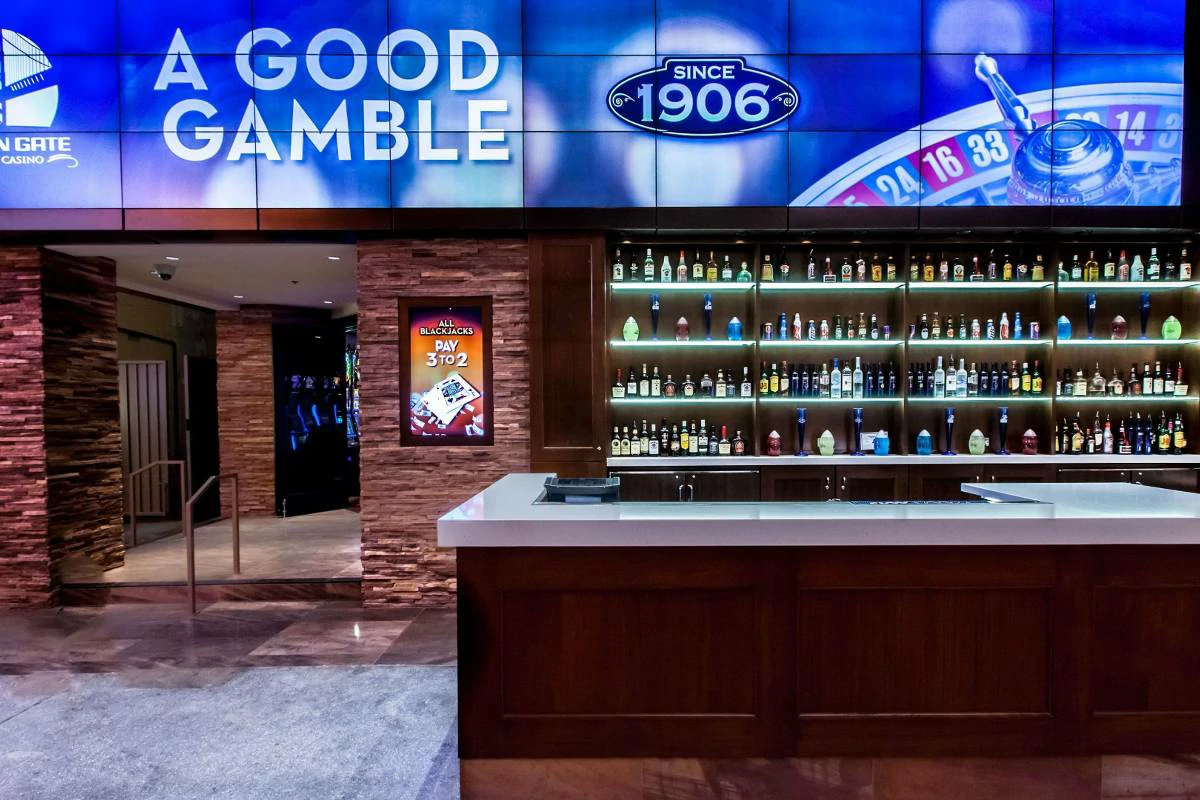
In a city constantly focused on the next dazzling new resort, preserving old hotels might seem counterintuitive. Yet, the value of vintage Vegas hotels extends far beyond their accommodations. They serve as architectural time capsules, offer a distinct charm, and hold vital links to the fascinating history that built this desert metropolis.
1. Historical Preservation in a City of Change
Las Vegas is a city of reinvention, where the old often gives way to the new. This relentless focus on progress creates a unique challenge for historical preservation. However, a growing movement recognizes the importance of safeguarding the city’s past.
“Las Vegas loves to erase. It’s part of our desire to build newer and bigger. But what happens when we bulldoze all that came before?” questions Emily Neighbors, an architectural preservationist specializing in mid-century Las Vegas buildings. “Vintage hotels allow us to see the layers of our city’s story”.
Older hotels provide tangible reminders of where Las Vegas began and how far it has come. The classic neon signs, intimate casino floors, and the design details of these buildings capture a bygone era’s spirit and ambition. Each architectural gem contributes to the city’s identity and offers a historical counterpoint to the ceaseless wave of development.
2. The Unique Character and Charm of Vintage Hotels
Beyond historical significance, vintage Vegas hotels possess an irreplaceable charm. They often have smaller, more intimate casinos, where the sounds of the slot machines and excited chatter fill the space in a way the cavernous modern resorts don’t. Restaurants with old-school menus offer a comforting familiarity, and the lounge acts transport you back to the age of the Rat Pack.
“There’s just something different about stepping into one of the older hotels,” says Alan Balmain, a longtime Las Vegas resident and author of a book on the city’s early casinos. “You’re not just in a hotel, there’s a certain vibe and an energy that reminds you of all the wild nights and incredible stories those walls would tell if they could.”.
The quirky décor, vintage slot machines, and touches of old-school Vegas glamour in these hotels create an immersive experience you won’t find in the latest billion-dollar resort. There’s a sense of nostalgia and a connection to the audacity that made Las Vegas famous.
3. Links to Las Vegas’ Colorful Past
Vintage Las Vegas hotels are treasure troves of history. From the Rat Pack’s heyday to the influence of the mob era, the stories these buildings could tell are endlessly captivating. Every detail evokes the characters, glamour, and a hint of the grit that defined Las Vegas’ unique identity.
Many older hotels offer tours, have small exhibits, or have historic photos displayed throughout the property. Taking some time to walk around the Golden Gate, Flamingo, or El Cortez reveals these hidden gems that showcase their contribution to the legend that is “Sin City.”
While Las Vegas will always embrace the future, the preservation of its vintage hotels is essential. Losing these iconic buildings means losing a vital part of what makes the city truly special. The next time you’re strolling the Strip or exploring Downtown, venturing into those vintage hotels brings a deeper understanding of the pioneering spirit and enduring appeal of Las Vegas.
What Does “Oldest” Really Mean?
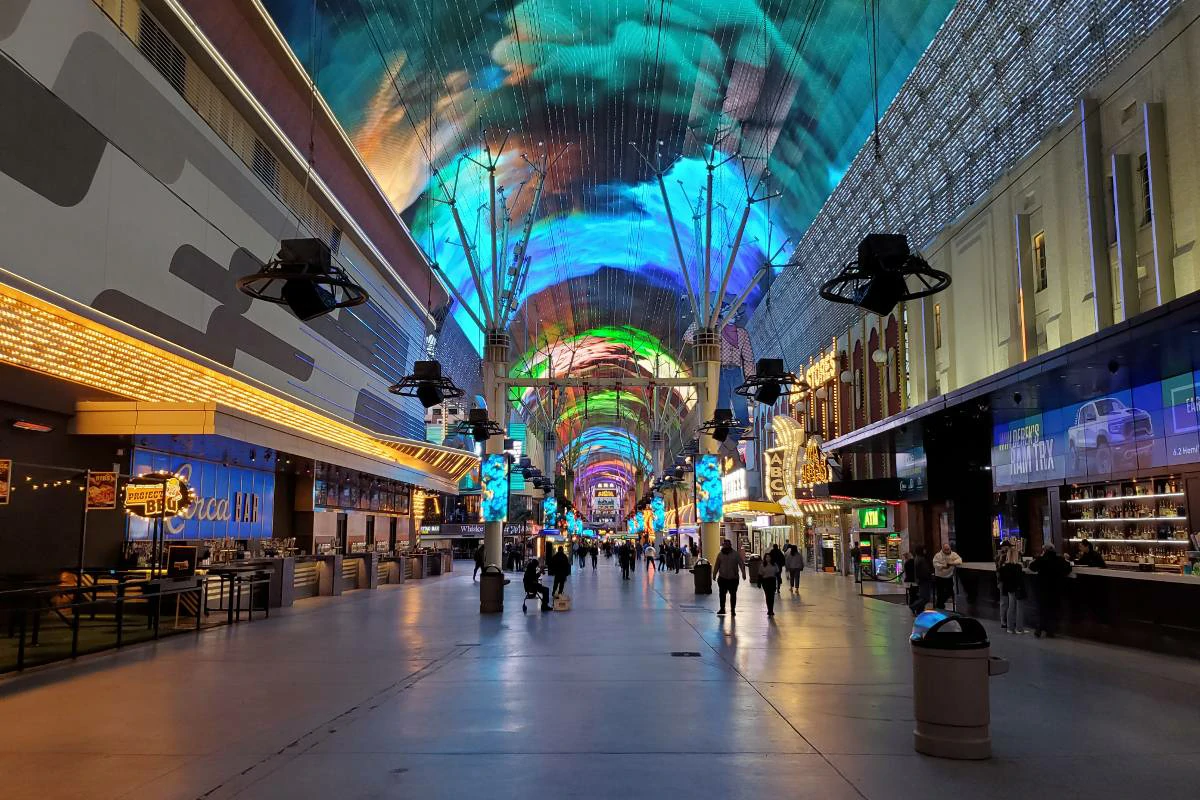
In a city like Las Vegas, where change and reinvention are embraced, the term “oldest” needs careful examination. There’s a difference between the original hotel being the oldest and the property upon which a new hotel stands being the oldest. Let’s break down what this means in the context of Las Vegas hotels.
1. Distinguishing Between Oldest Hotels and Oldest Properties
Oldest Hotels: This designation refers to hotels that have been in continuous operation since their initial opening. The Golden Gate Hotel & Casino holds this title in Las Vegas, having opened its doors in 1906. Even with renovations and expansions, the business itself has never ceased operating.
Oldest Properties: This category considers the land where a hotel stands. There can sometimes be a disparity. A casino-resort may occupy a historic location, but if the original hotel has been demolished and replaced, its claim to fame is the property itself, not the standing structure.
2. Demolitions, Renovations, and Rebranding: How It Impacts “Oldest”
The ever-shifting landscape of Las Vegas hotels introduces further complexities to the definition of “oldest.” Here’s how:
Demolitions: Iconic Vegas hotels, like the Dunes, the Sands, and the Riviera, despite their historical significance, no longer exist. While they were located on some of the city’s oldest gaming properties, the hotels themselves are gone.
Renovations: Las Vegas hotels frequently update their décor, add towers, and undergo expansions. While some, like the Golden Gate, retain their historical core, renovations can sometimes blur the line when determining how much of the original structure truly remains.
Rebranding: Name changes are common in Las Vegas. The same property may operate under several different names over its lifespan. While the hotel may be old, its current iteration and name could be relatively new.
Why the Distinction Matters
Understanding the nuances behind the term “oldest” is essential for historical accuracy and for setting expectations for those seeking authentic vintage experiences.
A historian might prioritize a hotel like the Golden Gate, due to its continuous operation. However, someone interested in the earliest days of Las Vegas might focus on the Flamingo’s property, even though the original buildings are gone.
“It’s not always a straightforward answer,” admits Michael Green, Associate Professor of History at the University of Nevada, Las Vegas. “The layers of renovation and rebranding in Las Vegas add both to the city’s charm and complicate its history. But it’s those layers themselves that tell a bigger story. “
Acknowledging the difference between “oldest hotel” and “oldest property” allows visitors to make informed choices. Those seeking to feel fully immersed in a piece of history may prioritize places like the Golden Gate, El Cortez, or the vintage areas of Binion’s. Others interested in the larger story of Las Vegas development could focus on properties like the Flamingo or Caesars Palace, even if their current buildings are newer.
Conclusion
Las Vegas, the “Entertainment Capital of the World,” is built on a foundation of constant transformation. Yet, the preservation and appreciation of its vintage hotels offer a unique glimpse into the city’s bold beginnings, glamorous eras, and the timeless allure that keeps people coming back. Even in a city constantly focused on the next dazzling new resort, the older establishments hold a special kind of magic.
Walking through the Golden Gate is a journey through time, a reminder of the days when Las Vegas was a dusty railroad town. Spending an evening at the El Cortez evokes the era of mobsters and downtown glitz. Staying at Caesars Palace, despite its modern updates, grounds you in a legacy of audacious luxury.
The stories of these historic hotels are interwoven with the very fabric of Las Vegas. Seeking out, acknowledging, and respecting their history enriches the experience of visiting this one-of-a-kind city. Whether you’re drawn to neon signs, the sounds of classic slot machines, or simply the enduring cool factor, vintage Vegas offers a charm you can’t find anywhere else.
FAQs
Q: Are vintage hotels cheaper to stay in?
Sometimes! While some have undergone luxury updates, many older hotels offer more affordable rooms than their mega-resort counterparts, making them an excellent option for budget travelers.
Q: Are old hotels in Vegas well-maintained?
Most established vintage hotels are generally well-maintained and offer comfortable, modern amenities. However, doing some research beforehand is always a good idea. Check the hotel website and traveler review sites for recent photos and guest experiences.
Q: Do old Las Vegas hotels have a different atmosphere?
Absolutely! Older hotels often have smaller casinos with a livelier, more intimate atmosphere compared to the vast spaces of newer properties. Their restaurants and lounges tend to have retro charm and offer a sense of stepping back in time.
Q: Where can I find more information about historic Las Vegas hotels?
Here are some great resources:
- Neon Museum: This fascinating museum preserves a vast collection of Las Vegas’ iconic neon signs, many from historic hotels.
- UNLV Special Collections: The University of Nevada, Las Vegas has a fantastic archive of photographs, documents, and artifacts related to the history of Las Vegas hotels.
- Local History Websites and Blogs: Several blogs and websites are dedicated to preserving the history of Las Vegas. A quick online search with the keywords “Las Vegas history” or “Vintage Las Vegas” will turn up plenty of resources.
